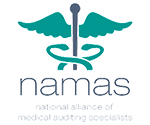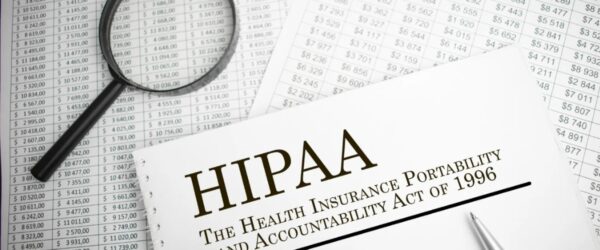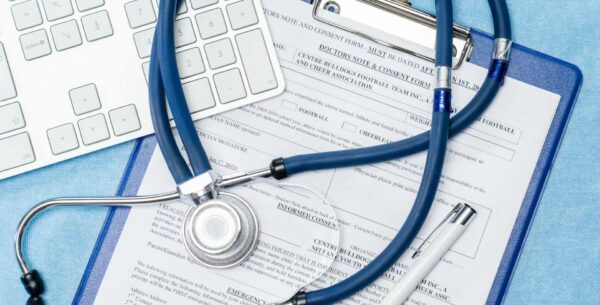Sean Weiss, Partner, Vice President of Compliance,CHC, CEMA, CMCO, CPMA, CPC-P, CMPE, CPC
This auditing and compliance “Tip of the Week” was originally published by the National Alliance for Medical Auditing Specialists (NAMAS), a division of DoctorsManagement.
Happy Friday – we made it through another week of change, after change, after change. There have been a lot of side-stepping and dancing around to get to where we are now. I have told clients for weeks that there is light at the end of the tunnel, but the question is whether the light is leading you out of the darkness or the light is a speeding train heading towards you!
Before I get into the actual regulatory changes, I just want to say to anyone reading this who is working on the front lines taking care of patients and putting yourself in harm’s way, thank you for your sacrifice and selflessness from the bottom of my heart! You are the true heroes and the love and gratitude we feel for you cannot be adequately stated in words!
Regulatory Updates
There are so many things that have happened during this past week, it’s hard to pick just one so I thought I would address a few:
Telehealth Services for CMS
This is an interim rule, which means it is open for public comment (until June 2, 2020) and in place until they create a final rule that addresses the comments made. However, it is possible this only remains an interim rule and once the COVID-19 public health emergency (PHE) is over, everything reverts back to the rules prior to the pandemic.
Since the commercial payers are all over the place with telehealth policy, we will have to wait and look at each one as they release specific guidance. I will say this: If you are using information that is more than 36 hours old, it is most likely not accurate, and you should be looking for more recently released information as this train is moving very fast.
With regard to proper billing of the telehealth services for CMS, the following guidance is found on pages 14-15 of the interim final rule CMS released (link here). Here is what it says:
“For example, a physician practicing in an office setting who, under the PHE for the COVID-19 pandemic, sees patients via telehealth instead of in person would be paid at the non-facility, or office, rate for these services. Similarly, a physician who typically sees patients in an outpatient provider-based clinic of a hospital would be paid the facility rate for services newly furnished via telehealth. To implement this change on an interim basis, we are instructing physicians and practitioners who bill for Medicare telehealth services to report the POS code that would have been reported had the service been furnished in person. This will allow our systems to make appropriate payment for services furnished via Medicare telehealth which, if not for the PHE for the COVID-19 pandemic, would have been furnished in person, at the same rate they would have been paid if the services were furnished in person. Given the potential importance of using telehealth services as a means of minimizing exposure risks for patients, practitioners, and the community at large, we believe this interim change will maintain overall relativity under the PFS for similar services and eliminate potential financial deterrents to the clinically appropriate use of telehealth. Because we currently use the POS code on the claim to identify Medicare telehealth services, we are finalizing on an interim basis the use of the CPT telehealth modifier, modifier 95, which should be applied to claim lines that describe services furnished via telehealth.
We note that we are maintaining the facility payment rate for services billed using the general telehealth POS code 02, should practitioners choose, for whatever reason, to maintain their current billing practices for Medicare telehealth during the PHE for the COVID-19 pandemic.”
Nothing at this time is being done for not PHE COVID-19 reasons so it is my position that 02 should not be billed at this time and the interim rules above should be followed until a final rule or an amendment to the interim rule is released.)
“Thus, the 02 POS is not required and the POS (i.e. 11, 21, 22, 23, etc.) for the Originating Site where services were rendered should be used with the appropriate CPT Code (99201-99215, 99221-99223, 99218-99220, etc.) and Modifier 95.”
It should be noted there were approximately 80 codes added to the approved list, including all inpatient and observation codes as well as many codes for physical and occupational therapy and speech language pathology services.
Supervision and Enrollment
Direct physician supervision can now be provided virtually using real-time audio/video technology.
- Auxiliary personnel may enter a contractual agreement with the practitioner who bills Medicare to provide services that would ordinarily be rendered on an incident-to basis, and receive payment directly from the billing practitioner without submitting claims to Medicare.
- Medicare patients in the hospital no longer need to be under the care of a physician, meaning that other providers including nurse practitioners and physician assistants can fill that role.
- Providers no longer need to be licensed in the state where they are providing services. State laws will still apply, but CMS is waiving the Medicare requirement regarding state licensure. Providers must still be enrolled with Medicare and licensed in the state relating to their Medicare enrollment.
- CMS has created toll-free hotlines for providers to enroll and receive temporary Medicare billing privileges. All revalidation actions are postponed and all new and pending enrollment applications will be expedited.
For telehealth visits, providers may render telehealth services from their home without having to report their home address on their Medicare enrollment while continuing to bill from their currently enrolled location.
Cleaning and Disinfecting for Health Care Providers (HCP)
This one is so critical given the fact law firms are already lining up potential clients to go after medical practices and healthcare organizations having unsafe work conditions that caused these potential clients to contract COVID-19. Folks, I cannot make this stuff up! You have to CYA (Cover Your Assets) or I promise you it will be painful.
In an attempt to assist with this, I have drafted two documents that can be downloaded. The first is a COVID-19 Safety Memo to all staff outlining what reasonable steps the organization has taken thus far, which you should have all members of your staff still working in your building(s) sign. The second is a 15-page policy using verbatim language on “Universal Precautions” and “Reasonable Steps” that should be taken to ensure patient and staff safety. These are both in a sample format and you should customize them to address the operations of your organization/practice.
SBA Penalties for Misappropriation of Funds:
The final thing I will address is the SBA and other federally backed loans being made to providers. I will keep this short and sweet; at first, they said funds used for anything other than what the government has identified as appropriate use will result in the loans not being forgiven. However, we knew as with all things this would change and it did! It is now a FELONY if the funds are misappropriated. Here is the exact language: “I further certify that the information provided in this application and the information that I have provided in all supporting documents and forms is true and accurate. I realize that knowingly making a false statement to obtain a guaranteed loan from SBA is punishable under 18 USC 1001 and 3571 by imprisonment of not more than five years and/or a fine of up to $250,000; under 15 USC 645 by imprisonment of not more than two years and/or a fine of not more than $5,000; and, if submitted to a Federally insured institution, under 18 USC 1014 by imprisonment of not more than thirty years and/or a fine of not more than $1,000,000.” This language is based on the following five elements:
Current economic uncertainty makes this loan request necessary to support the ongoing operations of the Applicant.
_____ The funds will be used to retain workers and maintain payroll or make mortgage payments, lease payments, and utility payments; I understand that if the funds are used for unauthorized purposes, the federal government may pursue criminal fraud charges.
_____ Documentation verifying the number of full-time equivalent employees on payroll as well as the dollar amounts of payroll costs, covered mortgage interest payments, covered rent payments, and covered utilities for the eight-week period following this loan will be provided to the lender.
_____ Loan forgiveness will be provided for the sum of
documented payroll costs, covered mortgage interest payments, covered rent payments, and covered utilities. Due to likely high subscription, it is anticipated that not more than twenty-five percent (25%) of the forgiven amount may be for non-payroll costs.
_____ During the period beginning on February 15, 2020 and ending on December 31, 2020, the Applicant has not and will not receive another loan under this program.
Source: SBA.gov sample application form for the Paycheck Protection Program
The bottom line here is that you cannot cut corners and if you do expect to be hit hard. The government crackdown during national emergencies is unlike that which you experience during normal times, so be smart, color within the lines, and don’t try to skate along the edges to see how far you can push things. I promise you; they will push back and much harder!
Stay healthy and well!

This Week’s Audit Tip Written By:
Sean Weiss, CHC, CEMA, CMCO, CPMA, CPC-P, CPC
Sean is a Partner and Vice President of Compliance for our parent organization, DoctorsManagementWhat to do next…
- Contact us to discuss your audit needs by calling (800) 635-4040 or email [email protected].
- Read more: What can you expect from a coding and compliance review?
Here’s why thousands of providers trust DoctorsManagement to help improve their coding and documentation.
Quality of coders and auditors. Our US-based auditors receive ongoing training and support from our education division, NAMAS (National Alliance of Medical Auditing Specialists). All team members possess over 15 years of experience and hold both the Certified Professional Coder (CPC®) as well as the Certified Professional Medical Auditor (CPMA®) credential.
Synergy – DoctorsManagement is a full-service healthcare consultancy firm. The many departments within our firm work together to help clients rise above the complexities faced by today’s healthcare professionals. As a result, you receive quality solutions from a team of individuals who are current on every aspect of the business of medicine.
























